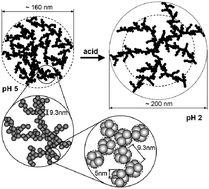Internal structure and colloidal behaviour of covalent whey protein microgels obtained by heat treatment
Abstract
Covalently cross-linked whey

* Corresponding authors
a
Nestlé Research Center, Department of Food Science and Technology, Vers-chez-les-Blanc, P.O. Box 44, Lausanne 26, Switzerland
E-mail:
christophe.schmitt@rdls.nestle.com
Fax: + 41 21 785 85 54
Tel: + 41 21 785 89 36
b Adolphe Merkle Institute, University of Fribourg, Route de l'Ancienne Papeterie, P.O. Box 209, Marly 1, Switzerland
Covalently cross-linked whey

 Please wait while we load your content...
Something went wrong. Try again?
Please wait while we load your content...
Something went wrong. Try again?
C. Schmitt, C. Moitzi, C. Bovay, M. Rouvet, L. Bovetto, L. Donato, M. E. Leser, P. Schurtenberger and A. Stradner, Soft Matter, 2010, 6, 4876 DOI: 10.1039/C0SM00220H
To request permission to reproduce material from this article, please go to the Copyright Clearance Center request page.
If you are an author contributing to an RSC publication, you do not need to request permission provided correct acknowledgement is given.
If you are the author of this article, you do not need to request permission to reproduce figures and diagrams provided correct acknowledgement is given. If you want to reproduce the whole article in a third-party publication (excluding your thesis/dissertation for which permission is not required) please go to the Copyright Clearance Center request page.
Read more about how to correctly acknowledge RSC content.
 Fetching data from CrossRef.
Fetching data from CrossRef.
This may take some time to load.
Loading related content
